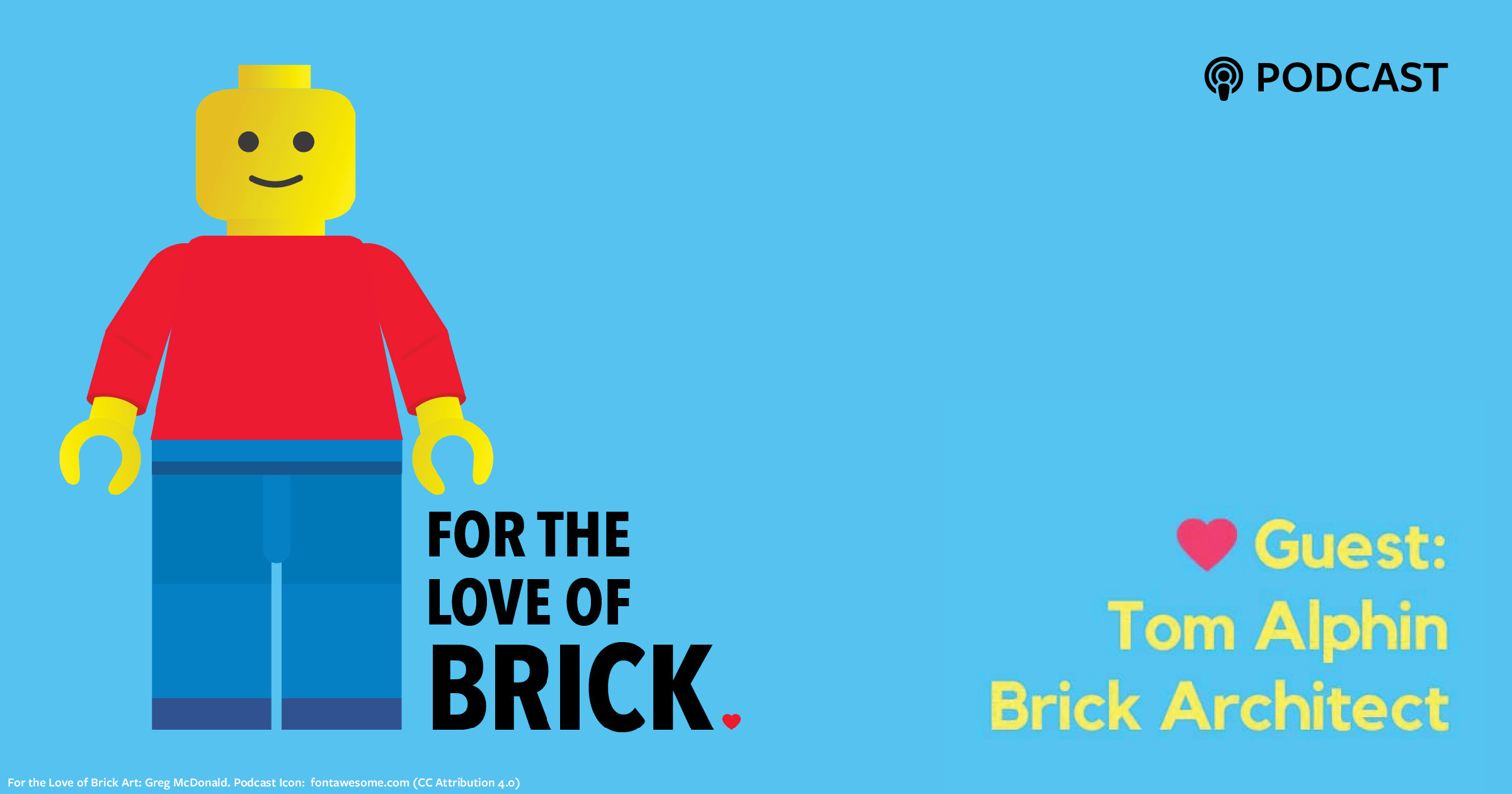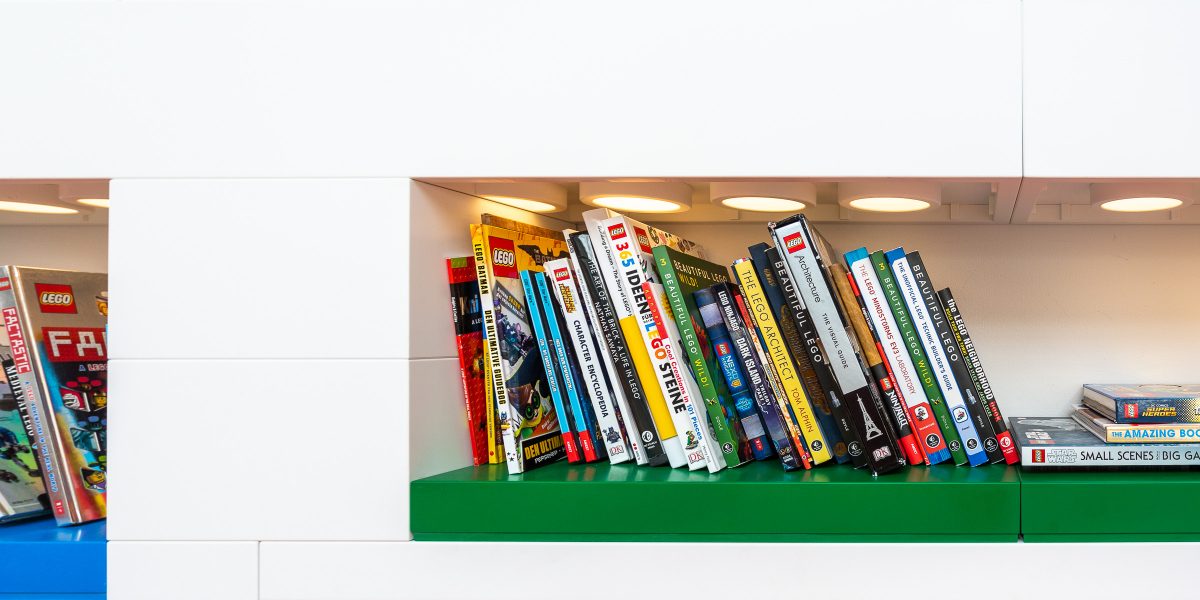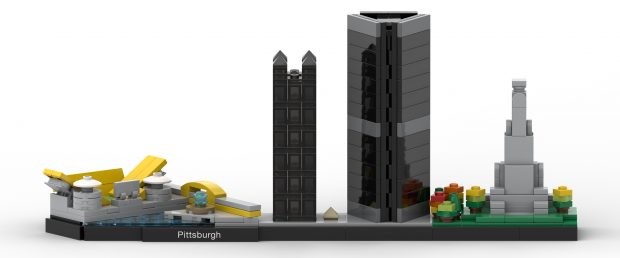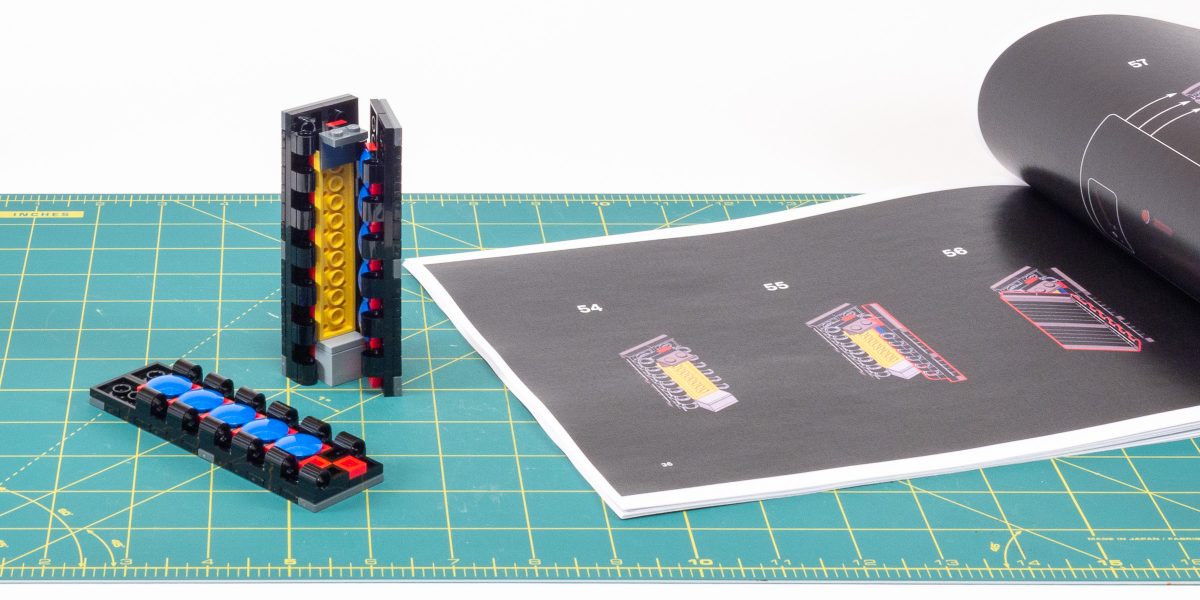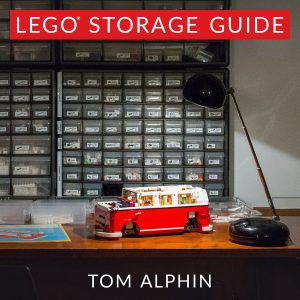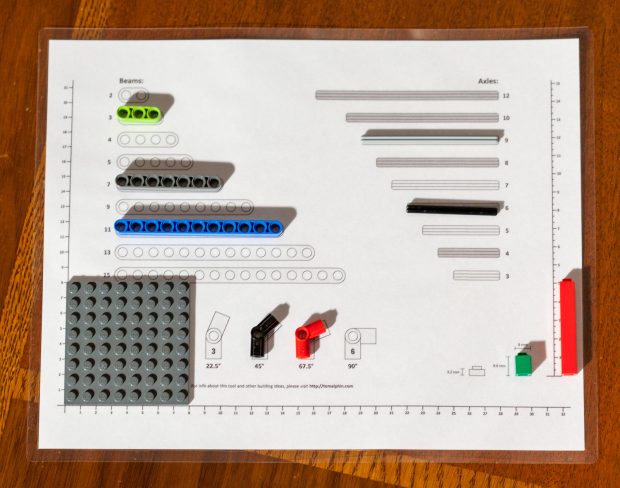Tom Alphin on ‘For the Love of Brick’ podcast
I hope you listen to my interview at the ‘For the Love of Brick’ podcast. This article includes behind-the-scenes photos and links to complement your listening experience!
Back on March 7th, I had a lengthy but very interesting conversation with Greg McDonald for his excellent LEGO podcast: For the Love of Brick. In his fortnightly podcast, he interviews one or two influential members of the LEGO community to learn about their love of LEGO.
Listening Guide
I was thrilled to hear the final edit from our conversation, which was released last friday. We had a far-reaching conversation about my personal LEGO journey, as well as the many books and resources that I’ve created and shared with the LEGO community over the years. This article includes a few excerpts from the episode, but is mostly meant to provide a visual aid and clickable links that you can follow while listening to the podcast (or after listening to it on a lovely walk in your neighborhood.)
For your convenience, I have included (timestamps) throughout this article to help you follow along with your podcast app!
- Listen Now at: Google Podcasts, Apple Podcasts, Stitcher, Spotify, pinecast.co, or wherever you get your podcasts.
(1:57) About Me
- I am a Program Manager at Microsoft, where I helped deliver the Themes/Wallpaper experience in Windows 7 and the Timeline feature in Windows 10 (to name a few).
- Classic Pirates was my favorite theme as a kid, but it would be no surprise that the LEGO Architecture Series is my favorite contemporary theme.
In particular, the #21050 LEGO Architecture Studio set drew me back into the hobby.
(4:22) 30-day Challenge
After buying the LEGO Architecture Studio set in 2013, I leaned in to a personal LEGO Architecture 30-day challenge, where I pushed myself to write 30 articles exploring architecture using LEGO.
We touched on several specific projects from my 30-day challenge:
- Many of the challenges focused on specific architectural styles, such as Shed Style, Art Deco, Prairie Style, Brutalist Style and the Craftsman Style.
- Greg highlighted my Mini City (Project 14) for the diversity of microscale builds.
- We also talked about my ‘impossible’ MC Escher waterfall (Project 12).
(6:10) ‘The LEGO Architect’ book
We talked at length about how hard it is to write a book, especially one that tackles so many different styles, building instructions, and photos of models by many LEGO Artists. This included a look back to the initial idea for the book, and how quickly I settled on the approach with a chapter for each architectural style with a mix of history, photos of real buildings, amazing LEGO Models and building instructions.
As a bonus for Brick Architect readers and podcast listeners, I dug up this early 2-page spread about Art Deco from my initial pitch to publishers.
Learn more about my book, The LEGO Architect.
(Available in 10 languages!)
(13:00) A little later, we touched on a common point of confusion for my readers: Why is my website brickarchitect.com but my book is called ‘The LEGO Architect’?
It turns out that there is a very simple reason—The LEGO Group controls how the LEGO Trademark is used through their Fair Play policies. The policy explains that ‘LEGO’ should always be in all caps, and cannot be used in an Internet Address. (They do permit books to include LEGO in the title.)
(14:00) Greg asked if The LEGO Group contacted me about my book? I explained that my publisher No Starch Press does not have a relationship with The LEGO Group, so my book is not an officially licensed LEGO product. That said, as you can see in the photo above, guests can read my book when visiting The LEGO House in Billund.
“it’s the artistic and creative and technical challenge of trying to capture a lot of detail in a small amount of space … hard to do right, but very rewarding.” (16:40)
(16:40) Greg and I talked about the joy and challenges associated with building microscale models. In my case, I started with microscale out of necessity, since I had a very small collection.
(18:14) Pittsburgh Skyline
I talked about the challenges in staying to the constrained footprint of the official skyline sets, and ensuring that all of the buildings are to scale to one another.
My LEGO Model of Pittsburgh was prototyped using real bricks, then built digitally, and ultimately assembled using real bricks and a custom instruction booklet.
What is going to be the hardest detail of this whole building to re-create using LEGO … once you’ve figured out the optimal part or parts to achieve that tricky bit, then you allow that to define the scale for the rest of the model. (20:38)
(22:21) We talked about how the three walls of the US Steel Building are connected using Technic parts. I’ve provided a photo as a visual aid as this is difficult to explain in a podcast!
(26:55) Sorting and Storage
We talked at length about how my collection is sorted, and my philosophy for sorting and organizing LEGO.
(27:40) I also mentioned how I use redirect cards to indicate when I have additional parts in overflow storage. (You can download and print from my LEGO Storage Guide)
In addition to chapters to help adults organize large LEGO Collections, I also talked about suggested products for the comparably small collections of families and kids.
(34:18) Greg asked how big my collection is? In my AMA in April 2020, I was asked “How many bananas does your collection weigh?” I did the math, and estimate my collection weighs around 1350 bananas.
(36:05) I explained how my collection is dominated by small 1×1 parts, which is one of the parts i prefer to order through the LUGBULK. (Earlier this year, I created a nerdy guide to making the most of LUGBULK.)
(37:08) LEGO Brick Labels
I talked about how the LEGO Brick Labels collection grew out of my 30-day challenge, and later my decision to write The LEGO Architect book. The collection started with just the parts in the LEGO Architecture Studio set, and the label collection grew as my collection grew.
By the time I got to 200-300 labels, it started becoming a fairly useful collection that others were interested in using as well. (38:55)
(40:35) In addition to the labels themselves, you can also download and print a PDF of all the labels organized into logical groupings. These groups are popular for folks trying to organize their own collections. (The guide can also be used as an inspiration tool when you get stuck on a technical challenge with your build.)
I wanted to come up with a small enough number of categories that people could ‘grok’ them, but also a large enough number of categories that each category has meaning. That said, it is difficult to decide just one category for certain parts. (41:10)
(44:14) I talked at length about the criteria for including parts in the Label collection. In practice, parts are added to the collection when they are very common, come in a wide range of colors, or have a very wide utility.
50:19 Other Tools
(50:19) Another tool that helps me decide which parts to include in LEGO Brick Labels is my report of the Most Common LEGO Parts. At this point, LEGO Brick Labels includes the top 800 most common parts from the last 5 years.
(53:05) Greg mentioned my Printable LEGO Ruler and Sorting Tool. It’s a PDF that you can print at 100%, and use to measure stud widths or brick heights.
(55:16) LEGO Conventions
While in-person LEGO events remain largely on hold for a little longer, we discussed LEGO Conventions briefly. While I sometimes display MOC’s at conventions, I talked about how the best part is the opportunity to geek out with other LEGO builders!
I attend BrickCon (Seattle) every year, and try to alternate between BrickCan (Vancouver, BC), and Bricks Cascade (Portland, OR).
58:32 Favorite LEGO Memory
You will have to listen to the podcast to learn about a few of my fondest LEGO memories! (I touched on how hard it was to make stop-motion LEGO videos in the 90’s.)
Closing Thoughts
It was a pleasure to participate in my first long-form podcast interview. I hope that we had a chance to touch on some of your favorite LEGO Topics, and you learned something new along the way!
I’ve mentioned some of my favorite For the Love of Brick episodes in my Monthly LEGO News Roundups. I’ve also highlighted a few of my favorite episodes below — Happy Listening!
Want More?
- Richard Jones of The Rambling Brick
- LEGO Photographer Shelly Corbett
- Tim Johnson of New Elementary
- Alice Finch and Megan Lum of The Women’s Brick Initiative

